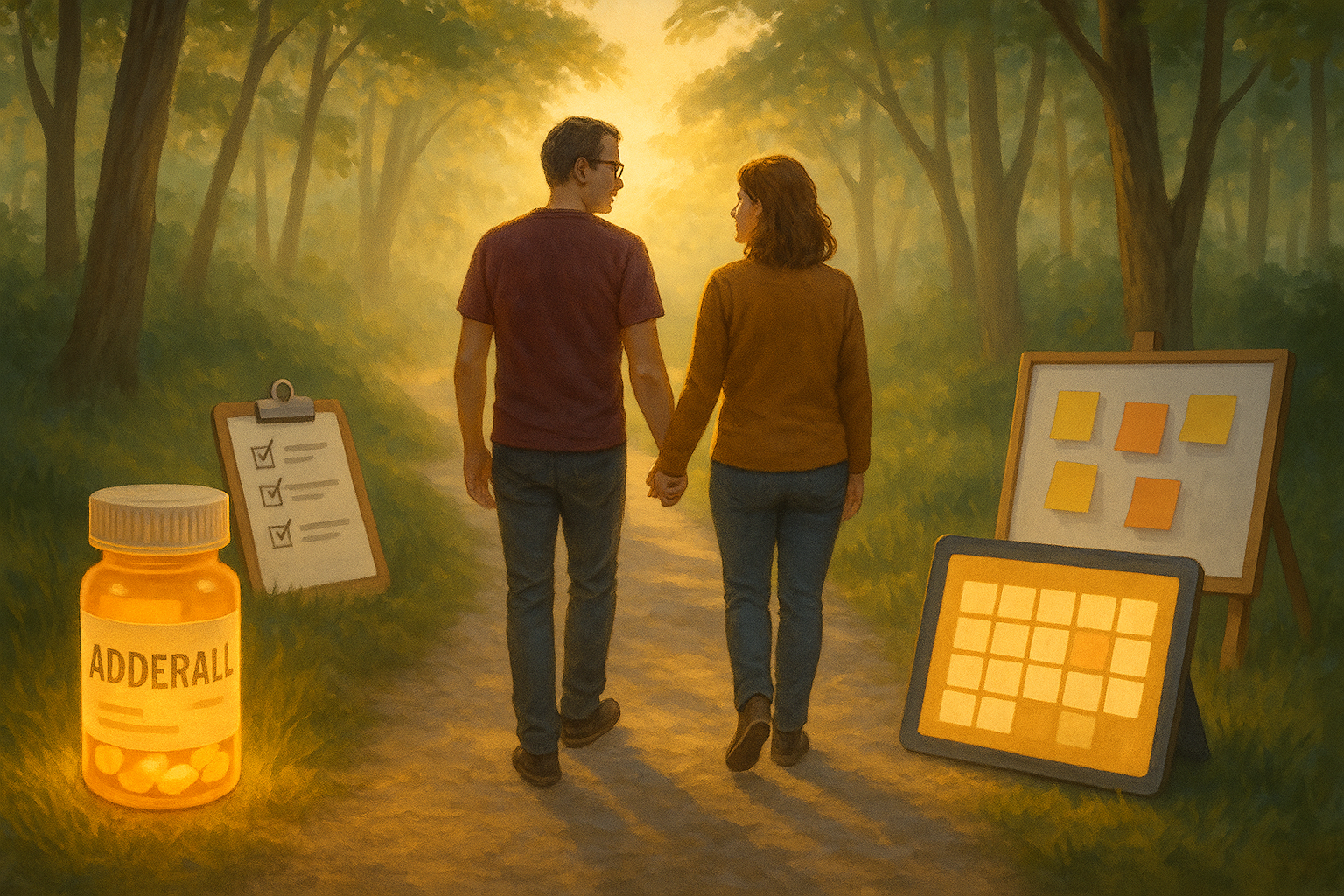Website designed with the B12 website builder. Create your own website today.
Start for free
Now What?
The diagnosis is in. You’ve cried, you’ve exhaled, maybe you even celebrated with takeout and a night without blame.
But then it hits: What now?
This is the part where many couples lose steam. There’s an unspoken hope that with the name comes the fix. That a prescription will clear the fog, a few therapy sessions will erase the hurt, and structure will fall into place like dominos.
But treatment for ADHD—especially in marriage—is not a quick fix.
It’s the beginning of an ongoing, sometimes frustrating, and often deeply rewarding transformation.
The Reality: Treatment Works—but It Takes a Team
1. Medication Can Be Life-Changing—but It’s Not the Whole Picture
For many adults with ADHD, stimulant medication (like Adderall or Vyvanse) or non-stimulants (like Strattera) can significantly improve focus, impulse control, and emotional regulation.
But here’s the catch:
Medication enhances capacity—it doesn’t build skills.
It might help someone get started on tasks, regulate emotions, or remember appointments, but it won’t automatically teach them how to manage time, repair communication, or rebuild trust with a hurt partner.
Think of medication as glasses: they help you see the road, but you still have to drive the car.
2. The Right Kind of Therapy Makes a Difference
Individual Therapy
Couples Therapy (ADHD-Informed)
ADHD Coaching
3. New Routines, New Rules
Recovery starts in the everyday systems:
These aren’t meant to feel like micromanagement. When both partners are involved in designing the system, it becomes a form of teamwork—not control.
The Emotional Work Can’t Be Skipped
Often, the non-ADHD partner expects change to come fast. They’ve been holding the relationship up for so long, and they’re tired. But healing takes time.
The ADHD partner needs:
The non-ADHD partner needs:
One couple shared:
“The turning point wasn’t meds. It was when we stopped blaming each other and started saying, ‘What does this version of us need to succeed?’”
Common Pitfalls to Watch For
Treatment Isn’t Linear—But It’s Worth It
You’ll make progress and then backslide. You’ll forget systems and have to rebuild them. You’ll fight and cry and hug and try again.
This isn’t about “fixing” one partner. It’s about learning to collaborate with the brain you both live with, building a marriage that’s not just surviving—but evolving.
You won’t always get it right. But when both people commit to the work, you will begin to recognize something beautiful:
Progress. Partnership. And peace.
Up Next: Part 5 — “Brave Love: Building Something Stronger After the Storm”
The final part of the series will explore how couples build resilient, joyful relationships on the other side of ADHD diagnosis and treatment—complete with rituals, humor, compassion, and a new kind of connection.